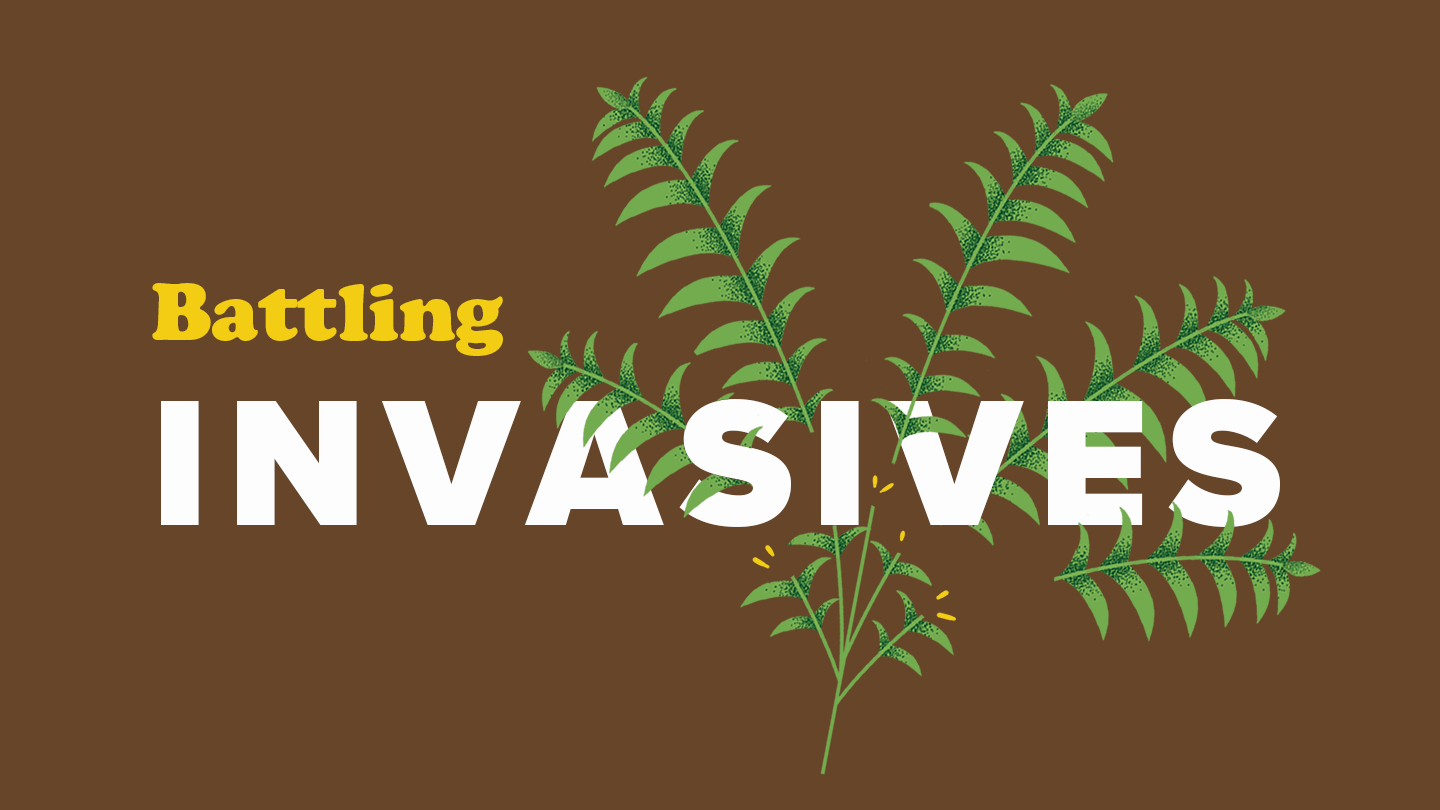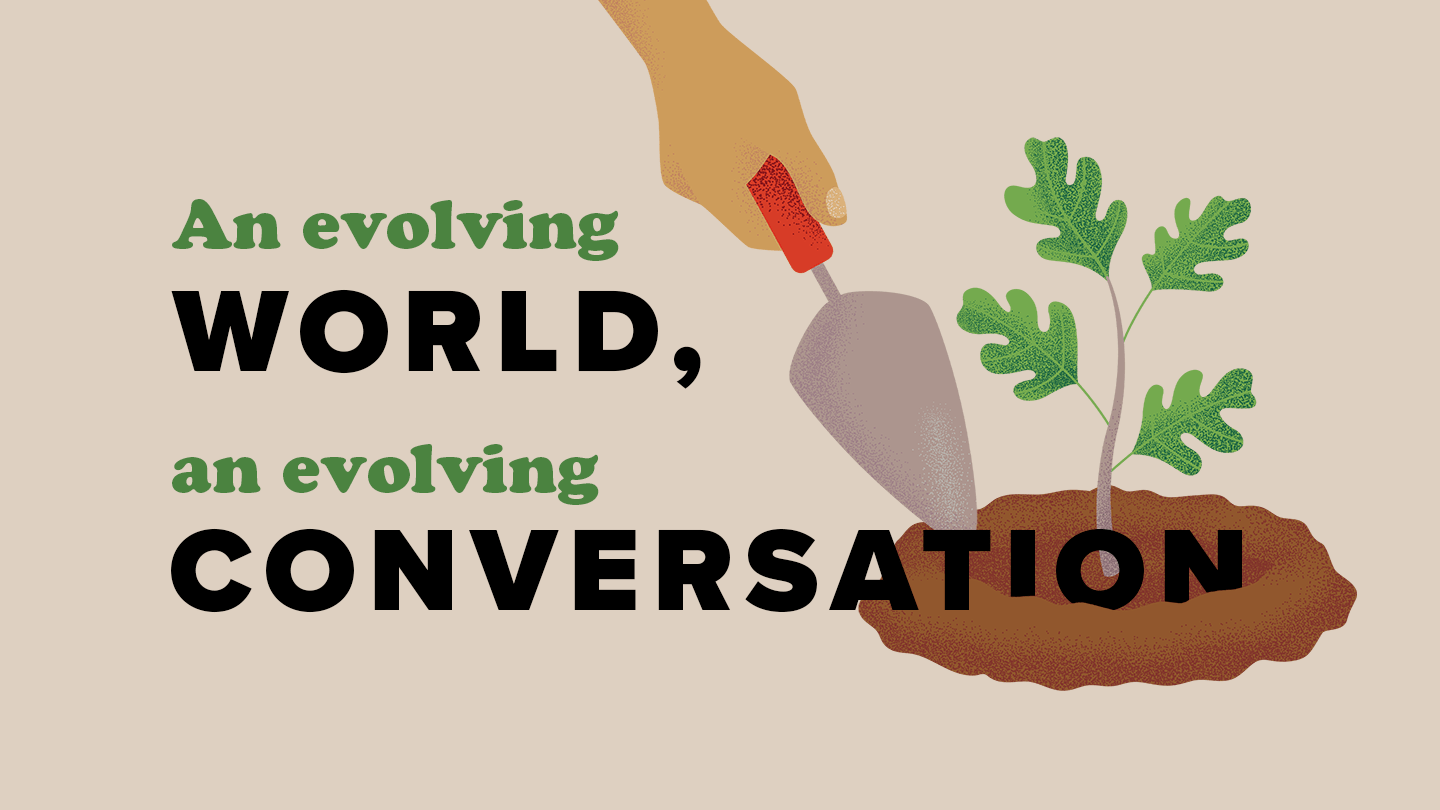Native, non-native, and invasive. If you’re passionate about plants, you’ve probably heard these terms thrown around a lot. They’re used to describe the origins of different species, and often the connotation is that native plants are “good,” while other plants are “bad” or unwanted, and should be removed.
But is this always true? Can plants really be “good” or “bad”? And how should understanding where plants are from inform the way we approach habitat restoration? The answer is…it’s complicated. Let’s get in the weeds.

Native plants are plants that are indigenous to a certain region, which have evolved to thrive in a particular ecosystem without human intervention. In North America, this often means plants that occurred prior to European colonization.
Endemic plants are native plants that grow in only one location in the world.
Non-native plants are plants that evolved elsewhere, but have been introduced to a certain ecosystem. This could happen as a result of human activity, such as agriculture or landscaping, or via natural means, like storms or migratory birds.
Naturalized plants are non-native plants that have established themselves in an ecosystem, but aren’t “transformative”—aka, actively displacing or harming native organisms. A naturalized organism, if it preceded our colonization, may by all rights be thought of as native.
And then, of course, there are invasive plants. These are non-native plants that are causing harm in a particular place—either by damaging the ecosystem, or by threatening human health.

Often, environmentalists feel like they’re at war with invasive plant species, and for good reason. These plants can cause very real harm to ecosystems, by crowding out natives and decreasing biodiversity.
In California, for example, invasive European grasses that have spread widely due to agriculture and grazing have replaced critical habitat used by native animals, harmed environments held sacred by the region’s indigenous peoples, and increased the frequency and spread of wildfire.
That’s why in addition to planting new trees, organizations like TreePeople spend a lot of time and resources mitigating the spread of invasive plants, so our reintroduced native plants can get a foothold.

Because invasive plants can cause so much harm, they are often framed as “evil.” But the truth is, these plants are simply doing their best to survive in whatever environment they’re in. Species colonization is inherent in evolution, and will continue to be long after the Anthropocene ends.
Our view of native organisms is in many ways anthropocentric, and the term native has meant different things to us at different points in our history.
This is especially true when we place arbitrary borders on natural ranges (which themselves are dynamic). A plant that is native to one ecological subregion in California is potentially invasive to another subregion within the same state’s border.

Native plants are amazing, and we love them. Because they’re well adapted to the climates and conditions of certain places, they’re often a great first choice for planting, and can help conserve water, slow the wildfire cycle, and create habitat for local insects and animals.
But things get complicated when you’re planting in cities. In reality, there is no plant that is native to urban soil. Changes to soil profiles, watershed structures, and below and above ground infrastructure have completely transformed urban sites from how they once looked.
This means that in some cases, increasing shade equity might mean planting a non-native tree that fits in a smaller parkway, versus a native oak that will grow to a massive size.
But, that doesn’t mean we should stop pushing for more restored urban green spaces where native plants can thrive in the future!

There are 12-15 native tree species (excluding subspecies and woody shrubs) native to the geographic range of the LA Basin, with similar species distribution in other Southern California cities.
Historically, SoCal’s lowland areas were not densely-forested, but rather populated with a mix of chaparral and sage scrub communities, and many of these trees evolved to grow in very specific locations—like along riverbanks or in canyons with distinct microclimates.
In a changing climate, the only reliable tool for long-term sustainability of our urban forest is biodiversity. That means planting natives, cultivated varieties of natives that are more tolerant to challenging urban environments, and non-invasive imports from areas that feature normally intolerable heat or drought conditions.
To date, there are roughly 294 different tree species that grow widely in Los Angeles—and only 21% of those are now on approved planting lists, due to unfavorable characteristics like susceptibility to disease and pests. If we care about wildlife and shade equity, we must find more novel species that we can plant in our cities—and halt development of already biodiverse natural areas, too.

Like all environmental issues, the conversation around native, non-native, and invasive plants has multiple layers. While it’s fun to joke about destroying particularly gnarly invasives like black mustard (something we do often), it’s important to remember that plants are not people. Refocusing on how human activities like colonization and agricultural production caused these invasive plants to spread in the first place allows us to think about how we, as a society, can change how we engage with our environment, to support more balanced ecosystems moving forward.
We encourage you to keep learning about and thinking through this nuanced and important issue—and to share your own thoughts about native, non-native, and invasive plants with us!

